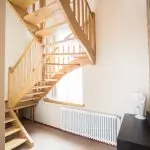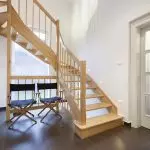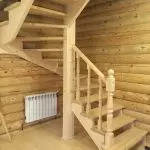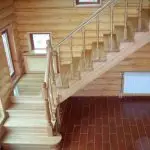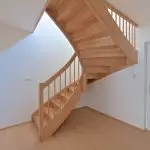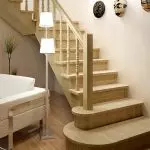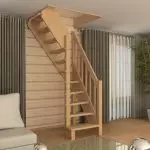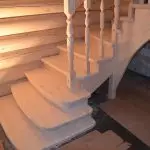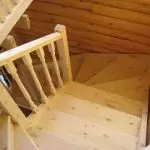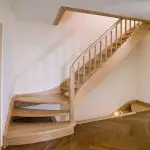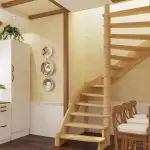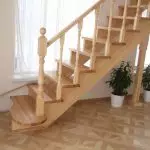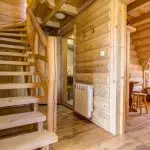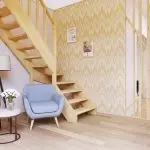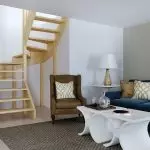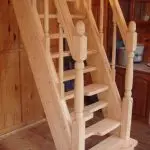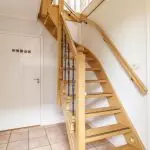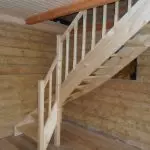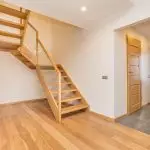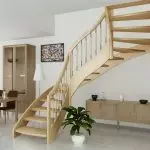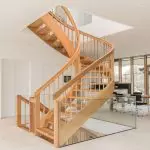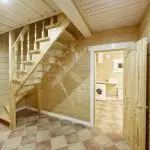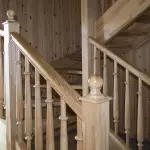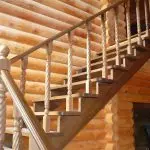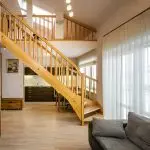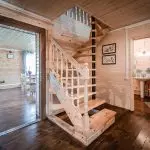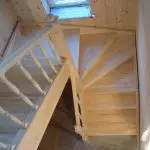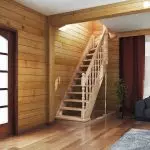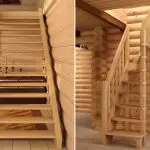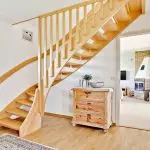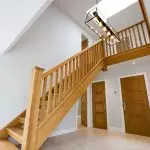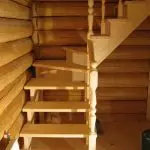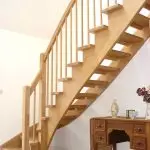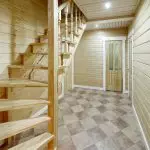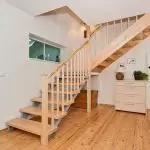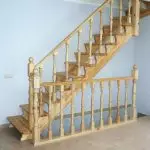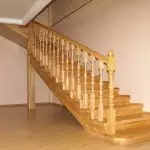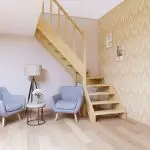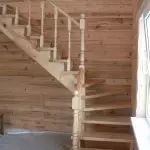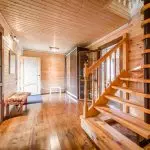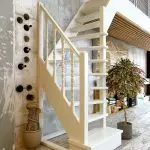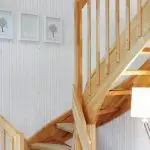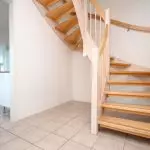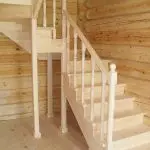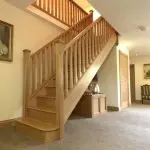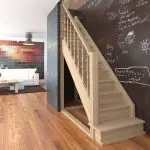Different wood breeds are used for the construction of country houses. One of the most sought-after is pine. It does not only produce lumber from it, residential buildings are erected, but also produce various products for household needs, furniture items and various interior elements.
In two-storey houses, stairs are often found. Such popularity of this breed is due to its distinctive characteristics, such as strength, relative wear resistance and dense texture. It is impossible not to note the availability of material in price. The last factor in most cases becomes decisive in terms of choosing a pine for the manufacture of stairs.
Ready stairs from pine
Today, many companies offer ready-made stairs from the pine mass. You can choose a universal project that is suitable for any types of buildings (private houses, baths, industrial premises, open buildings). Pine stairs perfectly fit into the interior of the room, where the walls are covered with clapboard, it is easy to handle, differ in pleasant light golden or even almost white.
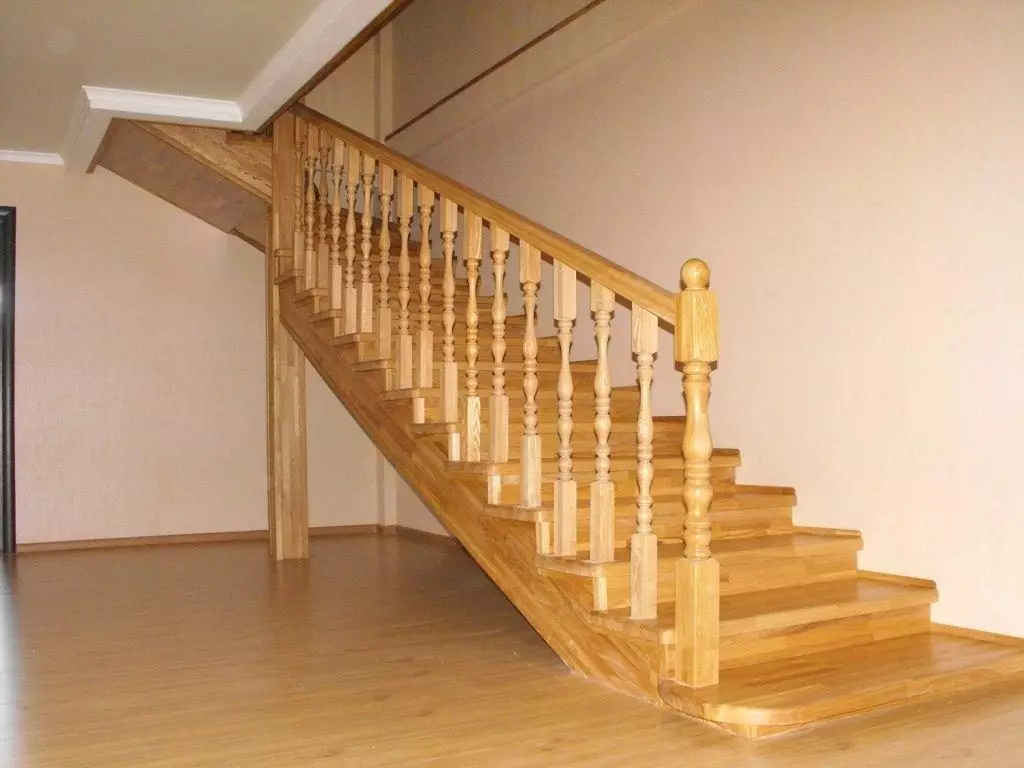
In addition to the finished models, there are also stairs from the pine array to order, which are manufactured by an individual project. The customer can get not just a beautiful, but also an original design that can be the main highlight in the interior of a residential building. And the affordable price for material is another reason to make a choice in favor of such a staircase.
Pros and cons
On the properties inherent in the pine, you can talk long. Despite the fact that this is one of the cheapest wood breeds, it has many advantages, and in some physico-chemical parameters is not inferior to expensive counterparts. Speaking about the wooden staircase made of pine, most often implies pleasant shades, radiating heat, aesthetically attractive appearance. But this is not the main advantages.
Especially I would like to note the following positive parties:
- Wear resistance. The cheapness of the material does not mean that products from it will be poorly or will not stand heavy loads. On the contrary, pine stairs are reliable structures, and their steps with high-quality finishing are resistant to abrasion.
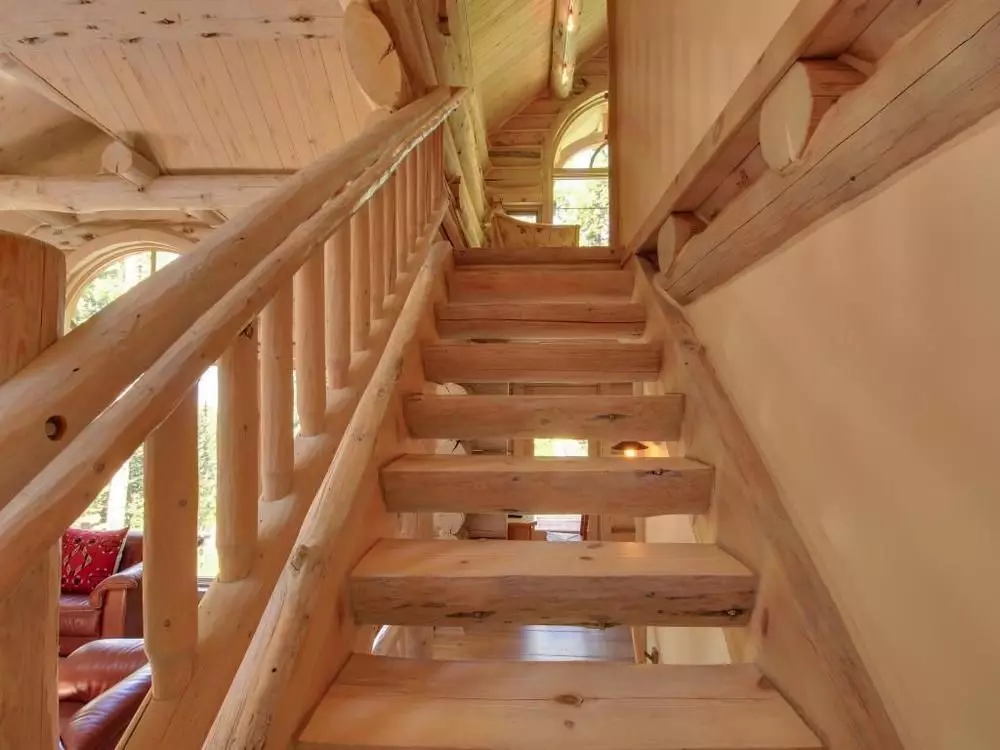
- Softness and ease. Pine - wood, which is well sufficiently joinery and decorative treatments. It is easy to cut, grind, from it you can get products of any, even the most complex shape. And the staircase from this tree does not create large loads on the floor and walls.
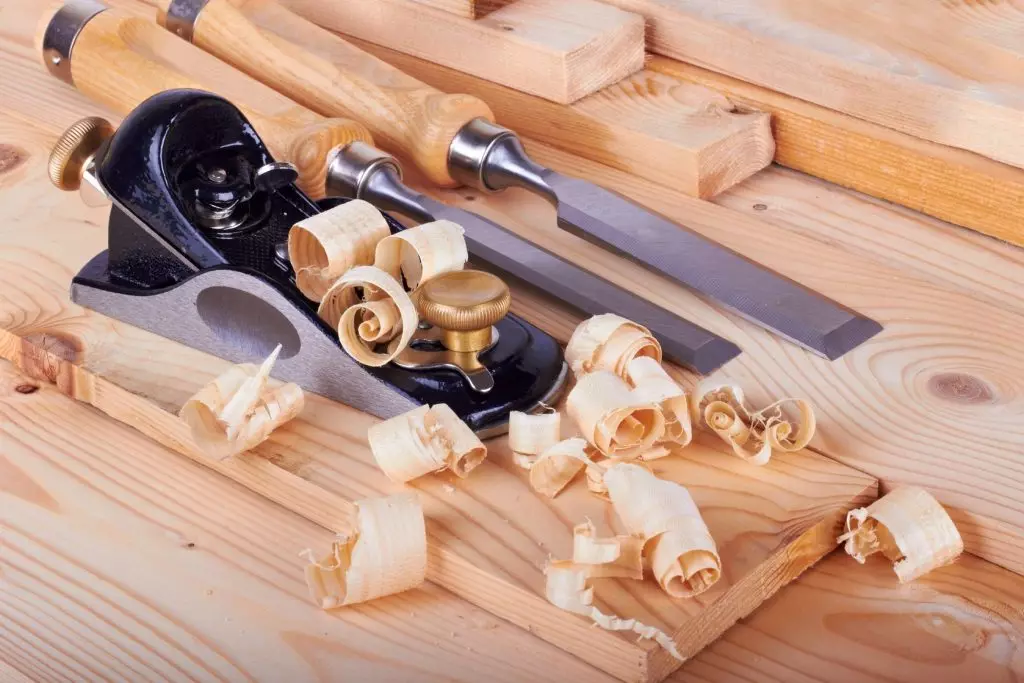
- Dense and homogeneous texture. If you compare two types of coniferous breeds and pine, then the latter is significantly less than bitch, which negatively affect the processing of the material and reduce its strength.
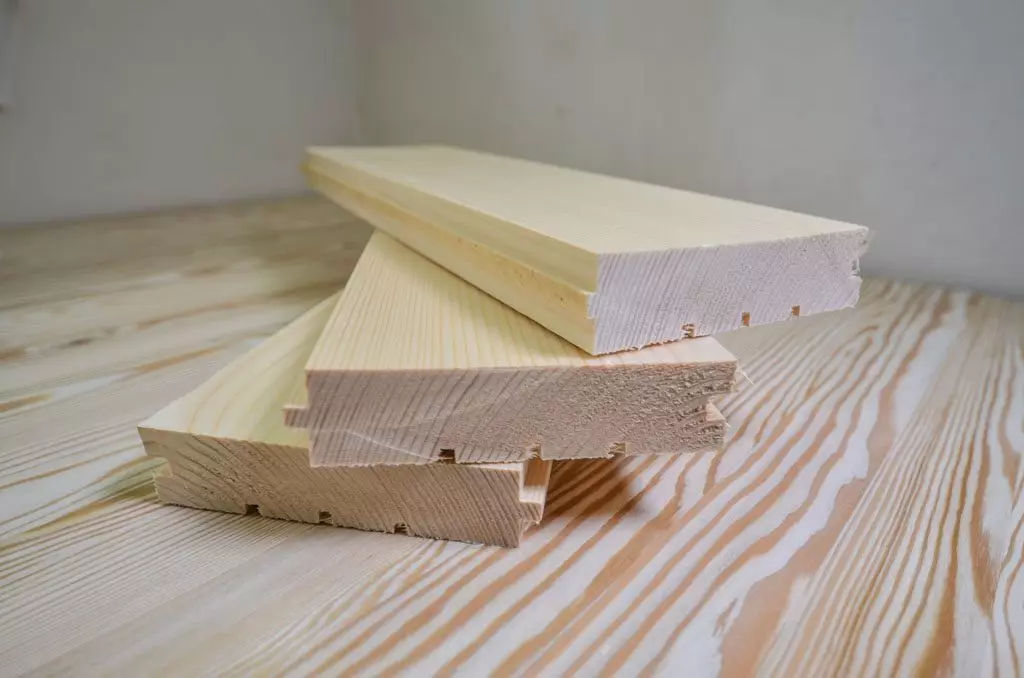
- Aroma. Pine, like any other coniferous tree, has a resin in its structure, which smells pleasant. Having preference to a pine staircase, you can fill your house with delicious fragrance and enjoy this flavor for several months.
Article on the topic: Constructive features of the ladder "Goose step" and step-by-step production
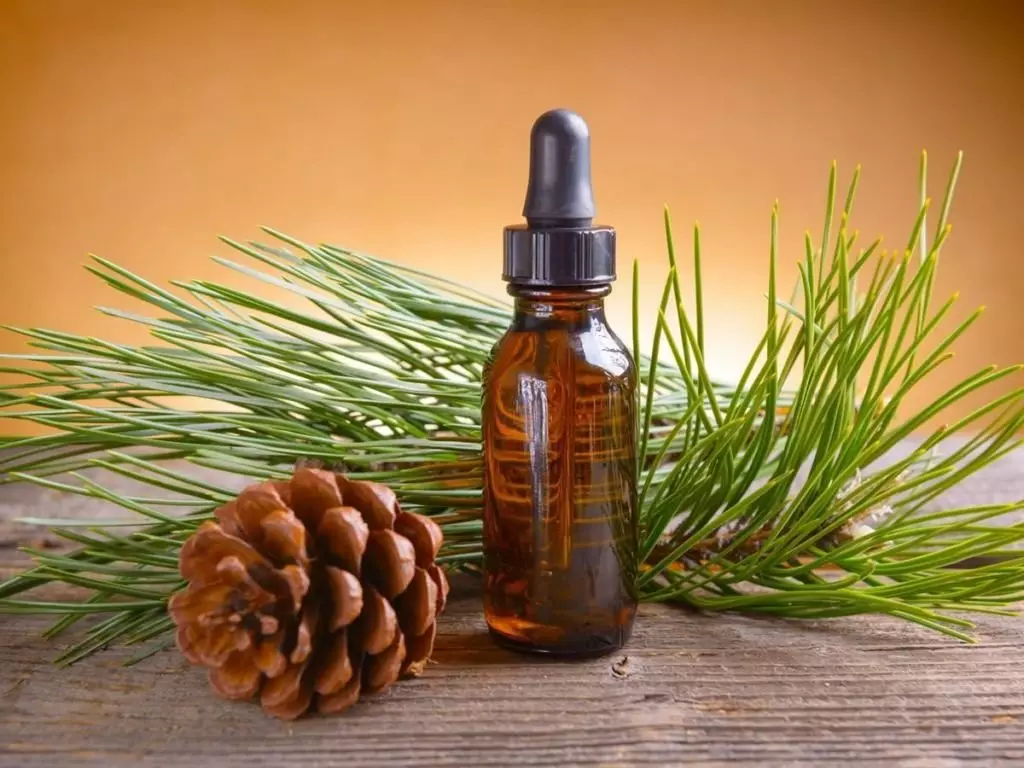
- Light toning. Produced made of pine wood have a natural light shade. By itself, the color is pleasant, but his monotonance forces to repaint the boards into brighter or dark tones. On a light tree, toning is more successful.
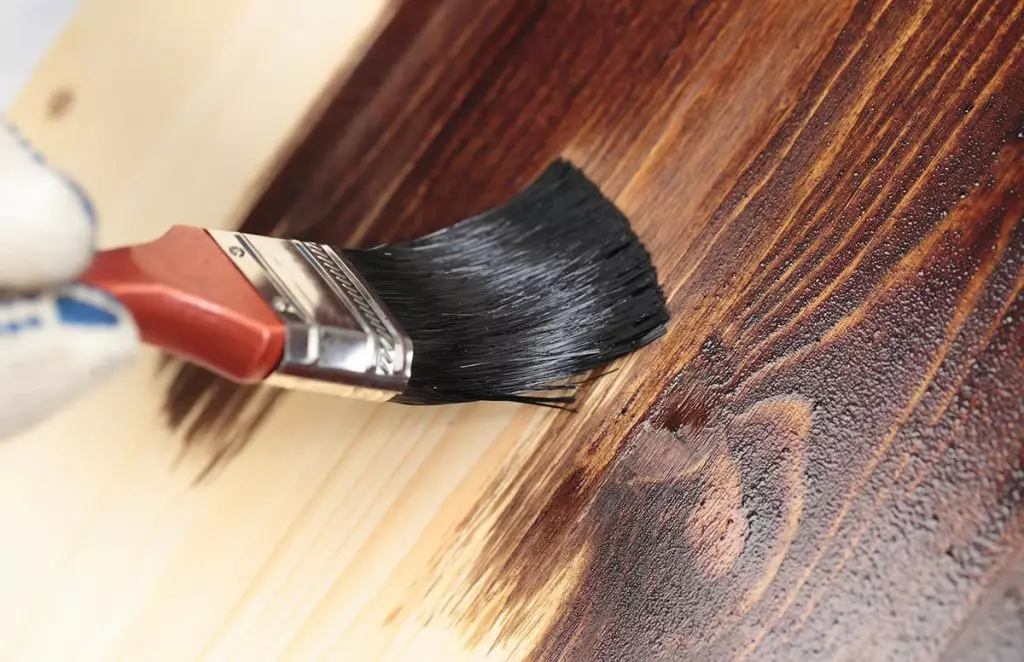
With a number of advantages, it is impossible not to mention the main mines. Of course, the softness of the material allows you to make products of bizarre forms, but this plus has the opposite direction. The fact is that with long-term operation of the stairs exposed deformation, and large loads and weight of people passing along the steps are forced the boards to fake - as a result, unpleasant creak and discomfort.
The best option to install a pine staircase is a place with a low degree of passability. Then the product will last much longer.
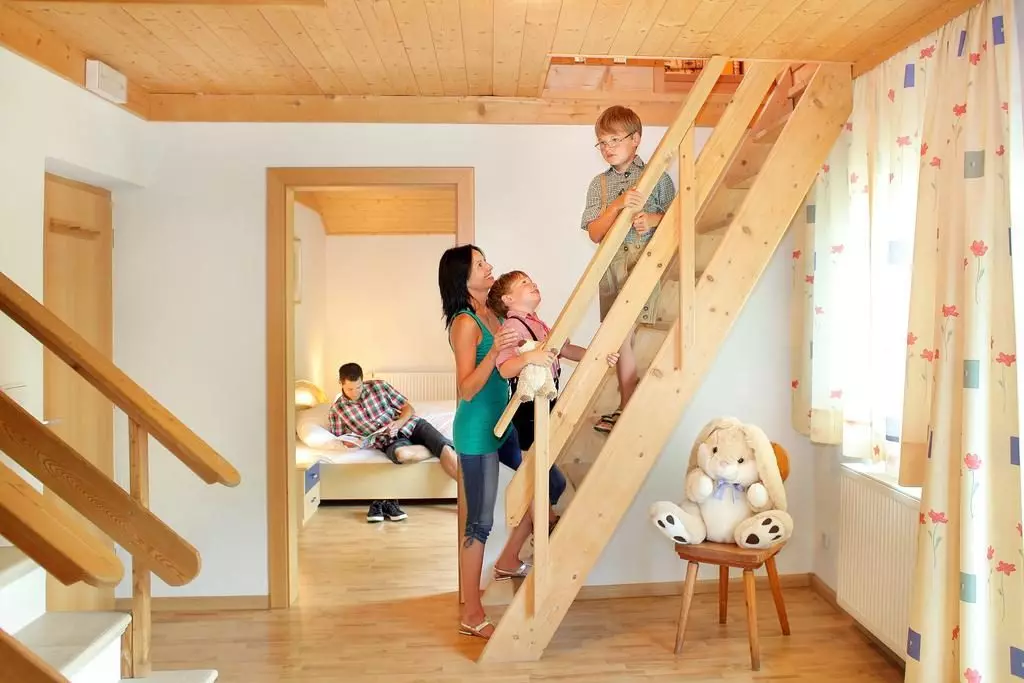
Another significant minus is the high resin content. This substance eventually destroys the structure of the tree, makes the surface of the staircase sticky and porous. In addition, the resin is an obstacle to uniform staining.
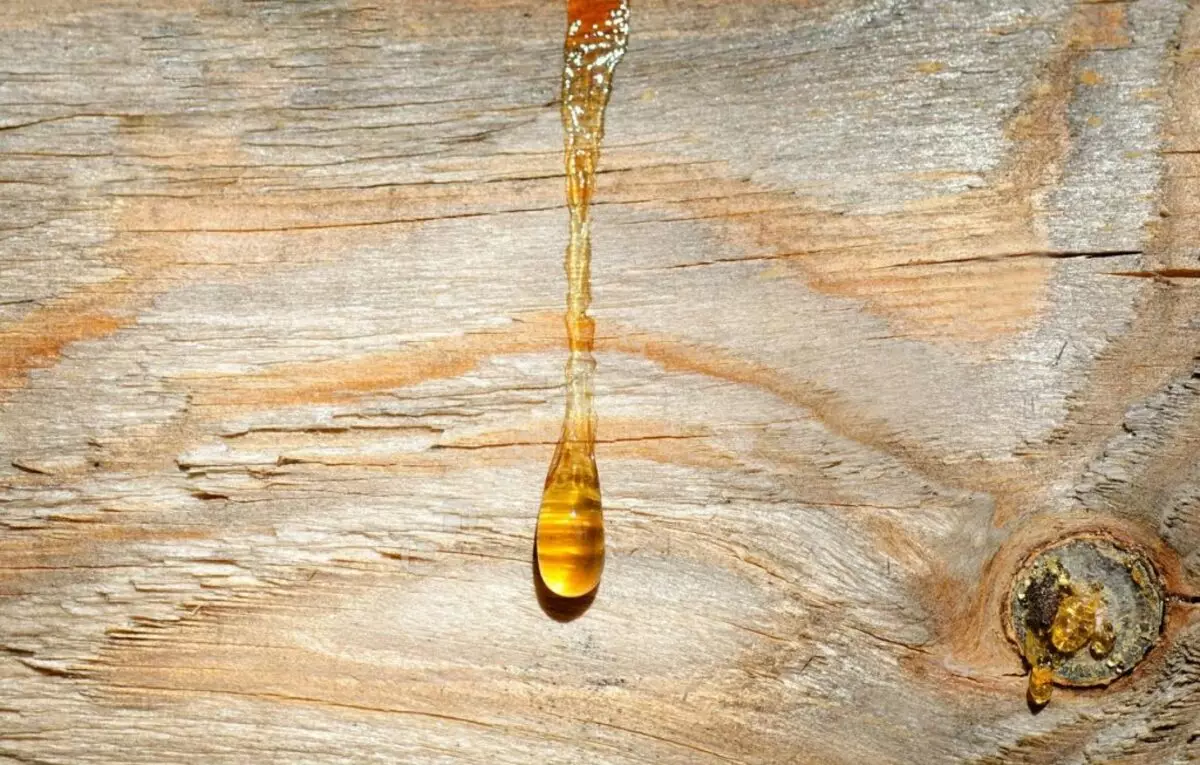
However, analyzing all the advantages and disadvantages, it is impossible to strike out pine as the main material for the manufacture of a staircase march. Today there are effective methods to increase the strength of the steps and get rid of excessive resinness in the structure of the boards. One of these methods is the processing of the product with antiseptics, impregnation and its further staining.
How to pick up color
Before painting the staircase, it is important to determine the color. Choosing a shade of paintwork material, it is worth considering the common style in which the interior of the room is decorated. From a properly selected color scheme, it depends on how harmonious design will fit into the overall setting.
Store the following recommendations:
- Painting of a wooden staircase can be monophonic. It is best to paint in color that will be slightly different from the shade of the walls and the floor.
- The decorative coating of the steps can completely repeat the natural color of wood or, on the contrary, to be more saturated and dark.
- It is allowed to cover the product and paints of two different shades. Such decoration is especially suitable if I want to transfer the stairs in the root and make it the main focus in the interior. But do not forget about the harmonious combination of color scheme.
- Painting in three or more colors should be carried out even before the staircase is collected. This will allow painting work better.
- If you want to give a dark color, you can mix the selected paint material with impregnation. Then the composition will faster deep into the fibers, the color will be rich, and the coating will last longer.
- If you need to lighten some kind of section (stage or railings), wood is better covered with a translucent lesing composition, which contains light pigments.
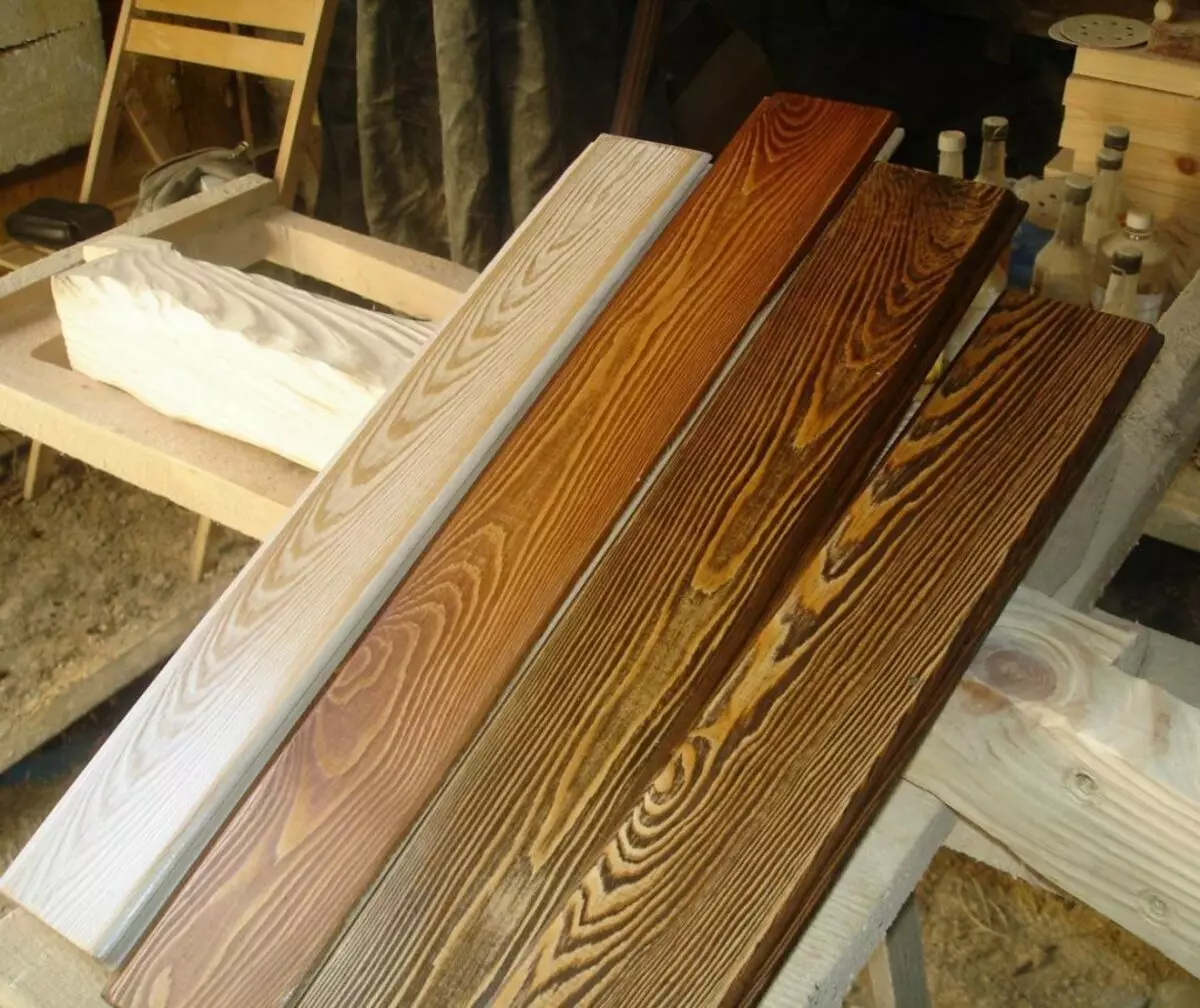
How can you paint / cover [embodiments]
You can paint a wooden staircase with different paintwork materials. That's just to cover the product from pine, not every composition is suitable, since the resin contained in this wood does not form moves and uneven impregnates the surface. As a result, the incorrectly chosen solution may not give a good result.
Article on the topic: how to make a staircase from the profile pipe: the choice of design, calculation and assembly | +50 photo
Let's look at what is still better to paint a pine staircase inside the house:
- Paints. This group includes LKMs, with which you can significantly change the appearance of the stairs. Paints are of different composition. Thus, pigmented materials will be well suited for pine, which will help hide some wood defects, alkyd paints - they perfectly fall on a smiling surface, creating a uniform and durable coating, as well as uretan alkyd dyes - are good for previously colored products.
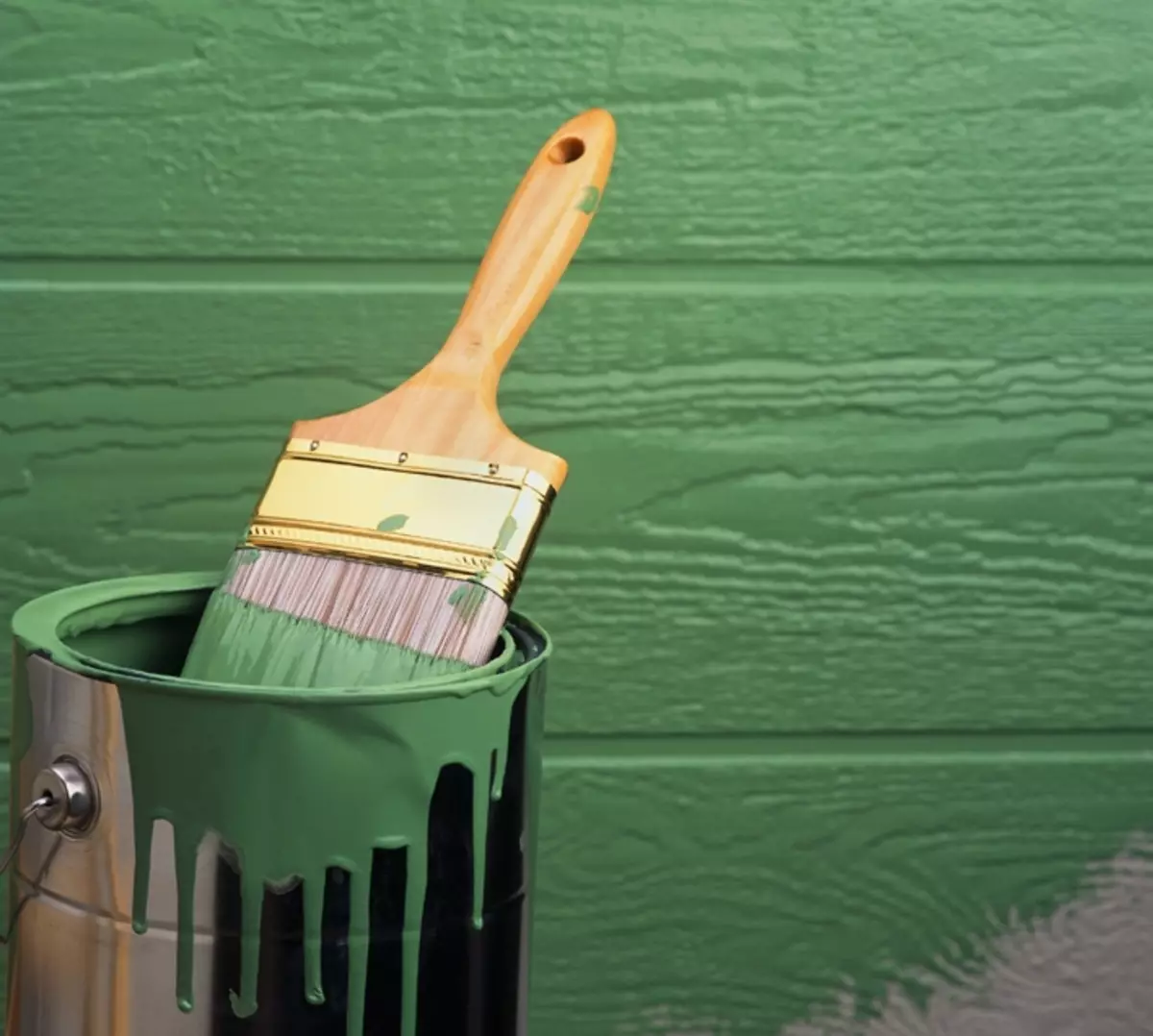
- Enamel. This is something mean between colors and varnishes. Pigmented enamels can be both matte and glossy, give a pleasant shade, perform a protective function, form a durable layer protecting pine from mechanical damage. In addition, enamel is the best solution if high-quality and fast painting of the stairs inside the house are required, since the composition does not release toxic substances and quickly dries.
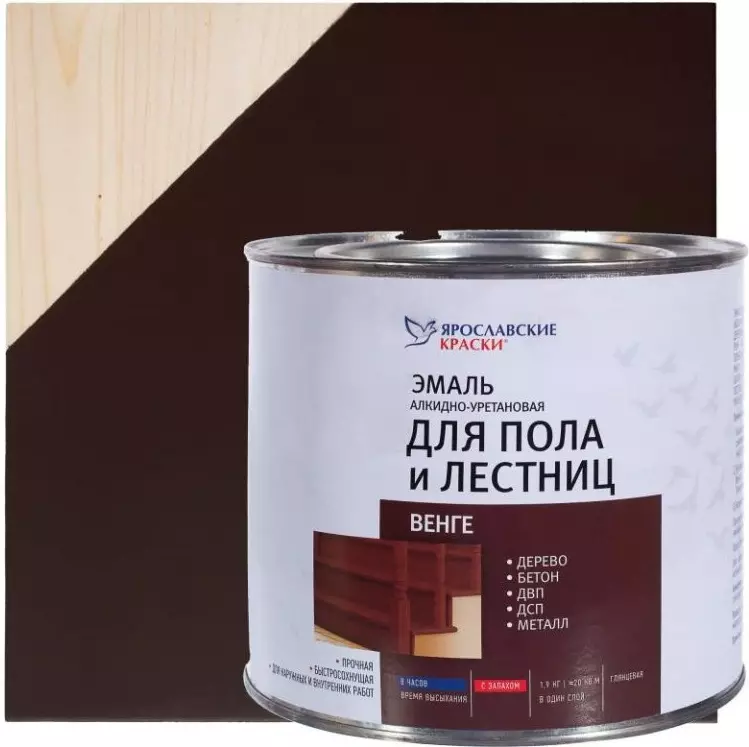
- Varnish. It may be transparent or tinted, acts as a protective layer for pine wood. Most often used for stairs, which before it was covered with a verse. Varnish is produced on alcohol and nitrocellulosic basis. The first option is the most suitable for covering the stairs inside the house, the second one is appropriate to apply for external work, as it has moisture and frost-resistant properties.
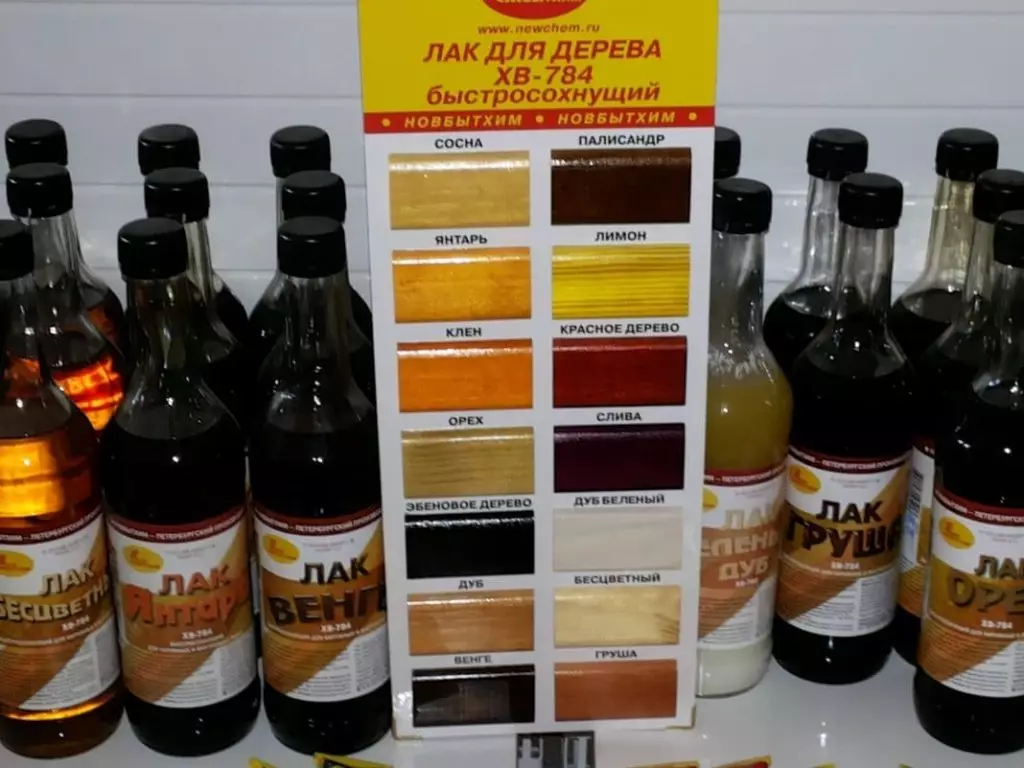
- Morida. It is rather a toning composition that does not hide the wood texture, and on the contrary, emphasizes it, giving a light and natural shade. Such a solution can be on aqueous, acrylic, alcohol basis (ideal options for internal work), as well as based on solvents (it is better to paint the staircase installed outside the house).
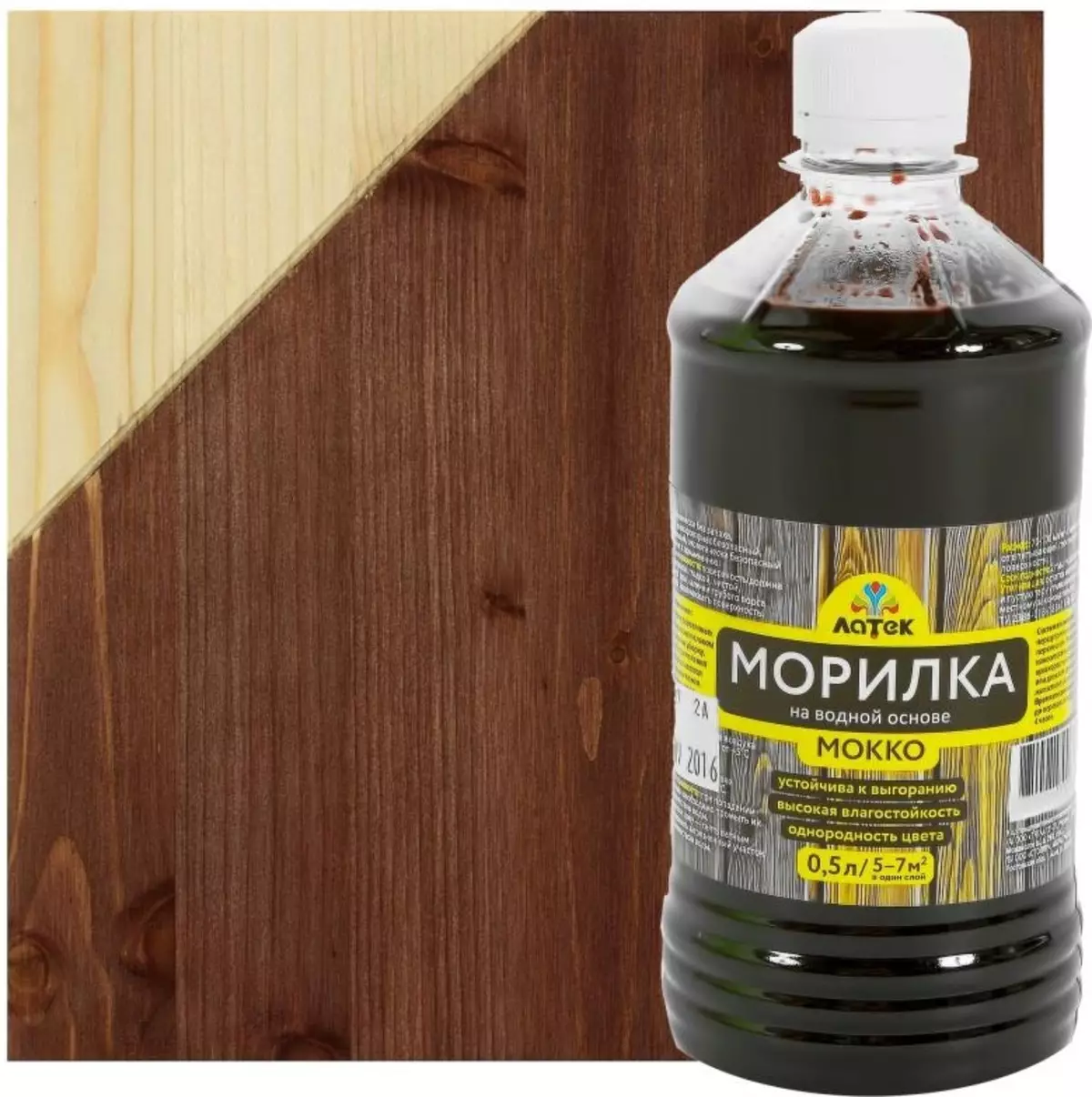
- Impregnation. It serves to protect wooden products from the negative environmental impact, has antiseptic and flame retardant properties. Impregnation can emphasize the texture of the tree or give a light shade. For pine stairs, optimal options are oil-based compositions or wax.
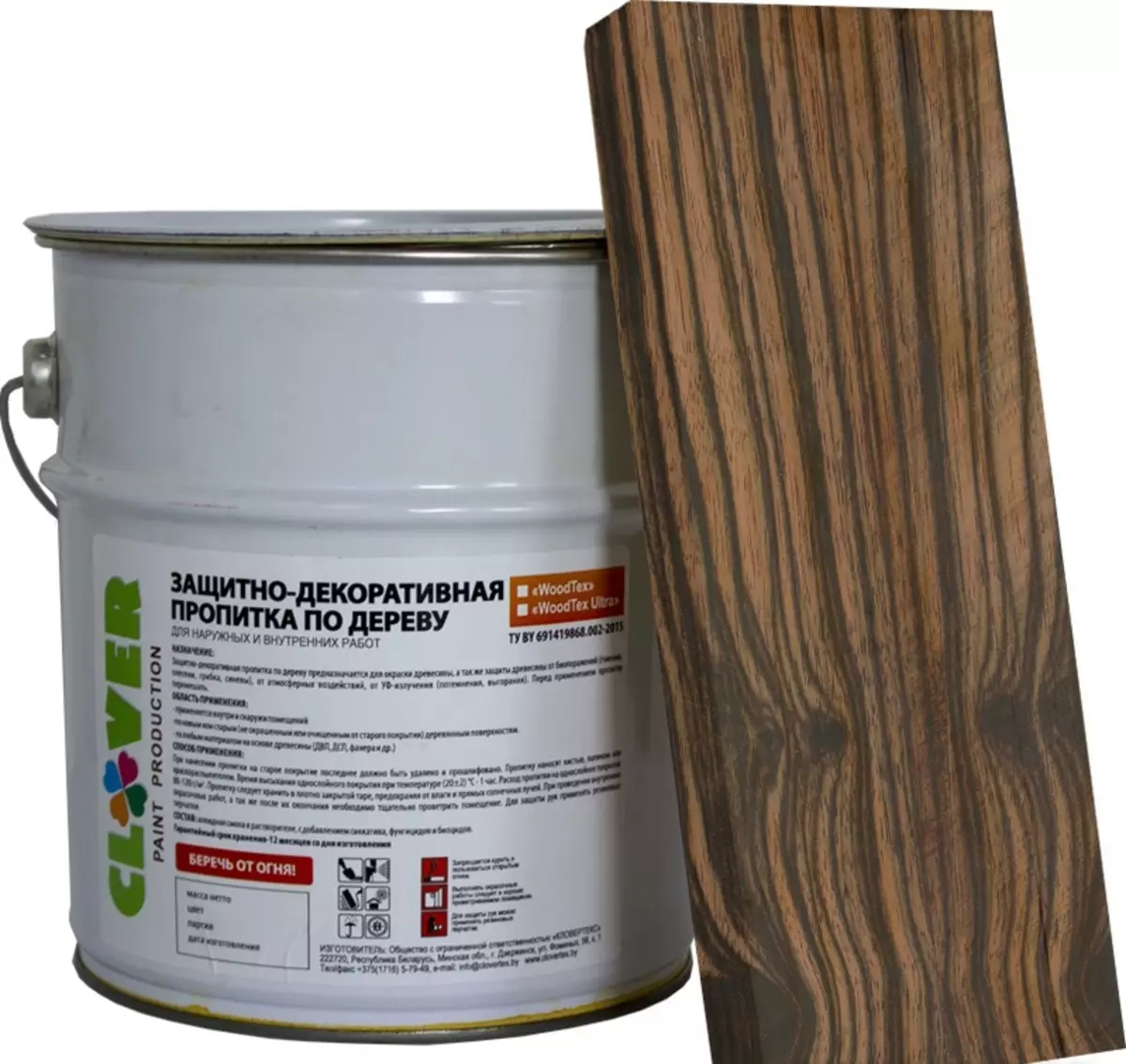
- Varnish. This is a completely transparent composition, something like a varnish. It is performed on an alcohol basis with the addition of resin substances. Politura is used to give wooden products with a mirror glitter and highlighting their textures, usually applied on top of a varnish or paint.
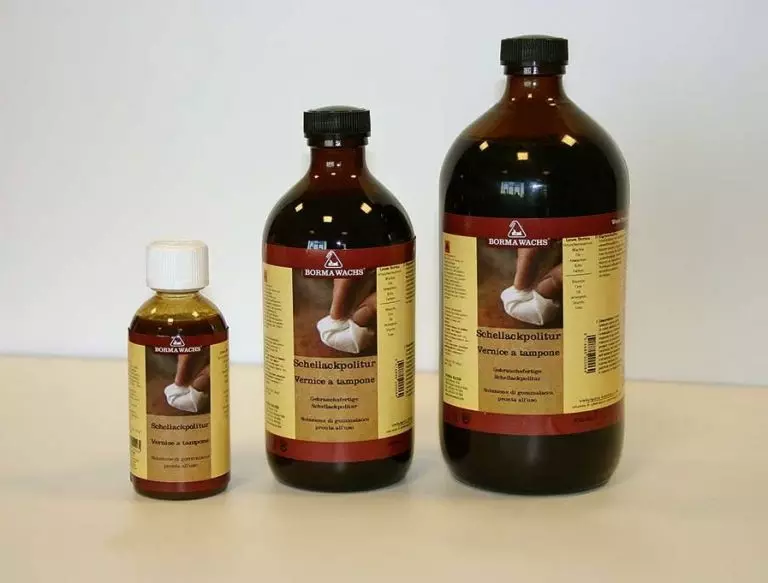
On the video: a woodcutter for internal works - the rules of choice.
How to paint the staircase from pine [Step-by-step instruction!]
The painting technology of the staircase from pine is practically no different from the decorative staining of products from other wood breeds. Here it is important to prepare the foundation, since the unprocessed surface with the presence of the resin is poorly amenable to uniform painting.The whole process can be divided into several stages:
- Degrease (resin removal).
- Putclone (sealing slots and other defects).
- Grinding (it is important to achieve a smooth surface).
- Directly applying the selected coloring composition.
Degreasing
This is one of the first steps that is performed at the surface preparation stage. The staircase is made of pine array and in its structure contains a large number of resin, so the product needs to be deguted. For this, special solvents are applied. As such, acetone and turpentine can be used. Using the treatment with such solutions from the surface, consistent traces are completely removed.
Article on the topic: Optimal dimensions of stairs: Design a safe and comfortable design
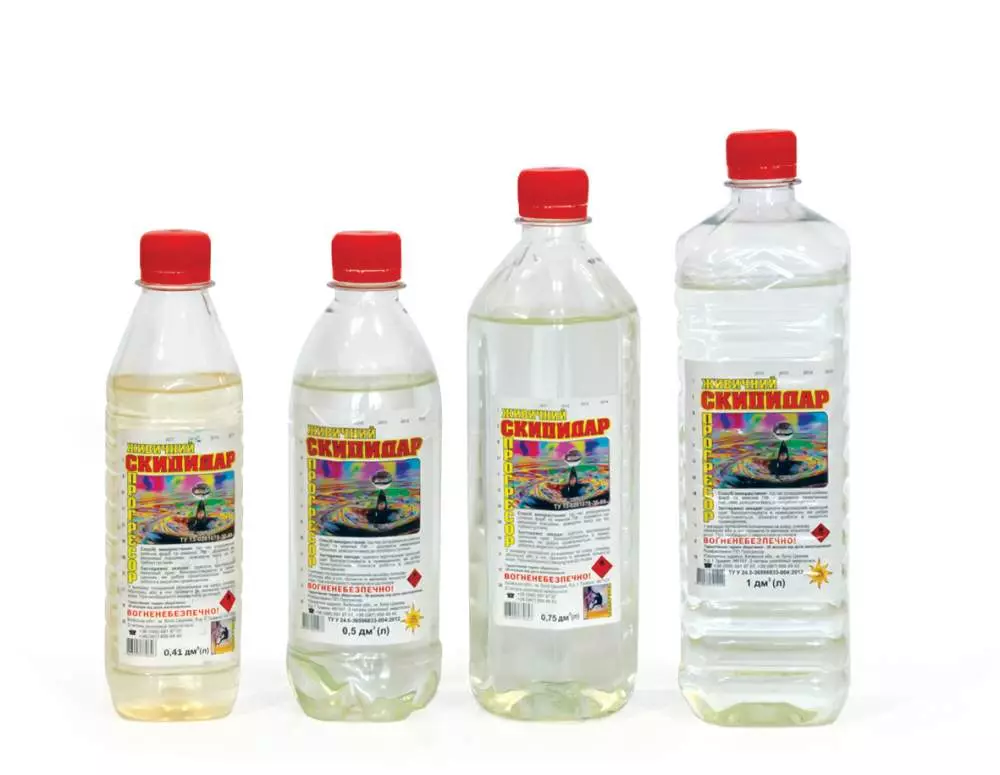
Shpaklevka
Before you start painting a wooden staircase, its surface must be aligned so that the paint lay down more evenly. You need to close all existing gaps, recesses and other defects. For these purposes, a special carpet on a tree on an acrylic basis is best suited. A mixture is applied using a rubber or plastic mini. Each layer applied should well dry, after which it is thoroughly grinding.
Important! If a total painting is planned, then the shoulder mixture can be of any color, but if the transparent varnish protrudes as a decorative layer - the putty should be tone the wood.
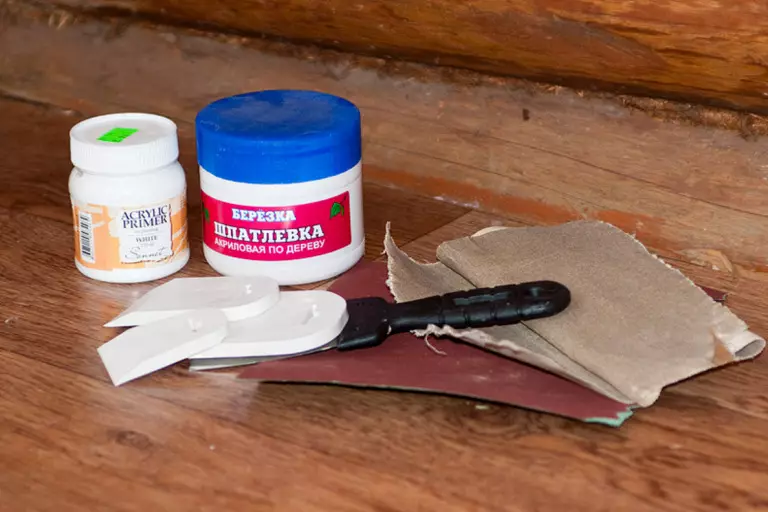
Grinding
This is not a member of an important stage, since it is the grinding that allows you to achieve a flawless surface. Of course, the occupation is not from the lungs and very labor. To facilitate your task, use the grinding machine. It will especially be necessary to handle steps. So you will save your time.Grind ends, protrusions, balusters and curly elements will still have to do with your own hands, for this use sandpaper. It is necessary to select a graininess: first there is a coating larger grain, then the sandpaper changes to a smallest grain.
Painting
Before staining, it is necessary to determine the working painting tools. Brushes are best suited if the alkyd paint or enamel of a sufficiently thick consistency was chosen as a decorative coating. Brush with more rigid bristles is applied and varnish. The roller is unlikely to handle the surface, because the ladder has a rather complicated form.
The paintopult is a good replacement of manual painting, that's just a very liquid coloring composition for better spraying.
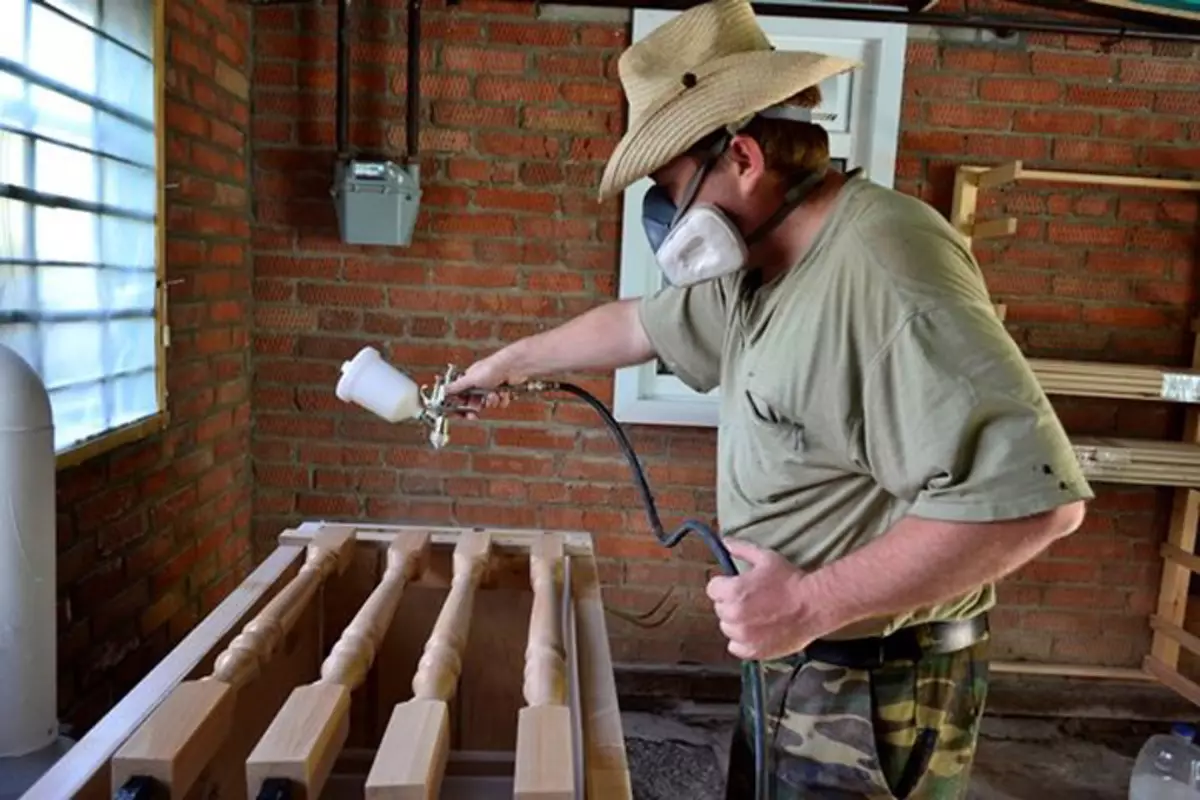
Typically, the staircase is stained in several layers. Paint or enamel is applied in three layers, varnish - six or more. The more layers are applied, the stronger the finished coating that can protect the surface from mechanical damage. At the same time it is important to wait for the complete drying of each applied layer.
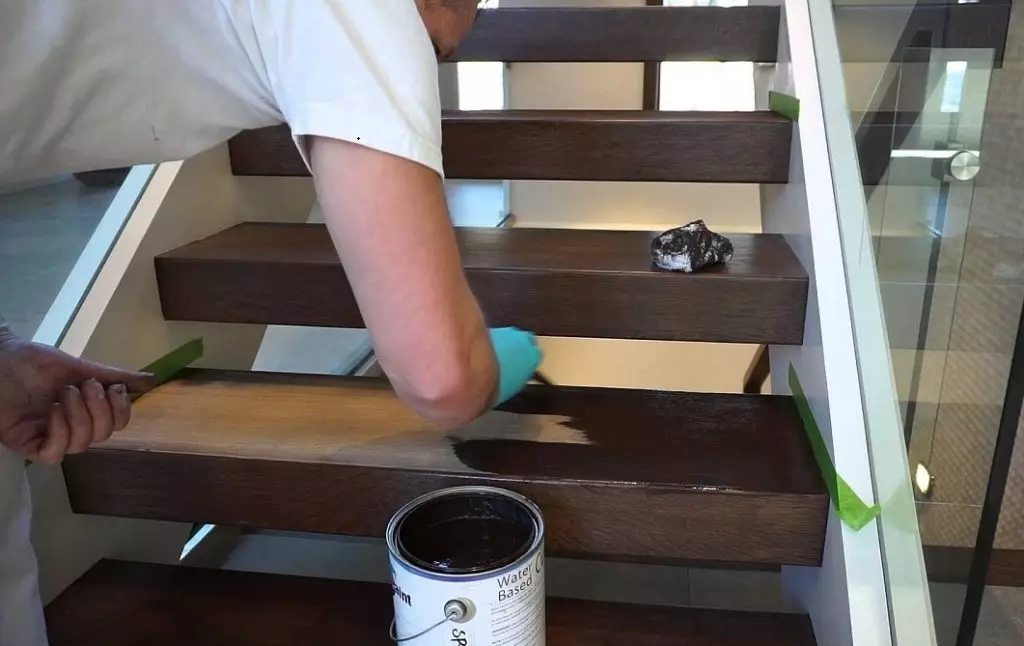
In case, instead of paint, lacquer was selected, another interlayer grinding is performed using zero sandpaper. This process is necessary to achieve better coating. It is very important that after grinding and before applying a new layer of varnish, there was no wood dust, otherwise all work will go to the pump.
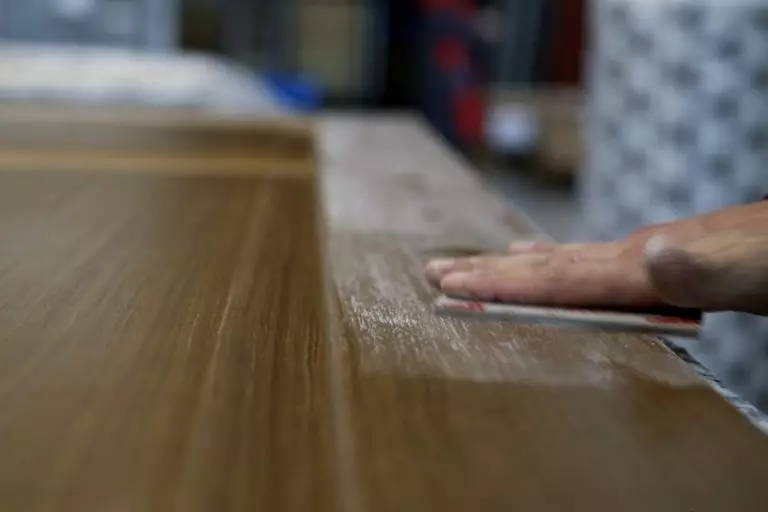
The issue of saving for many is very important. Choosing a pine staircase and carrying her painting with your own hands, you can not only save a family budget, but also get an aesthetically attractive product that will complement the interior of your home or even become the main highlight.
Preparation of wood under painting (1 video)
Different options for stairs from pine (52 photos)
